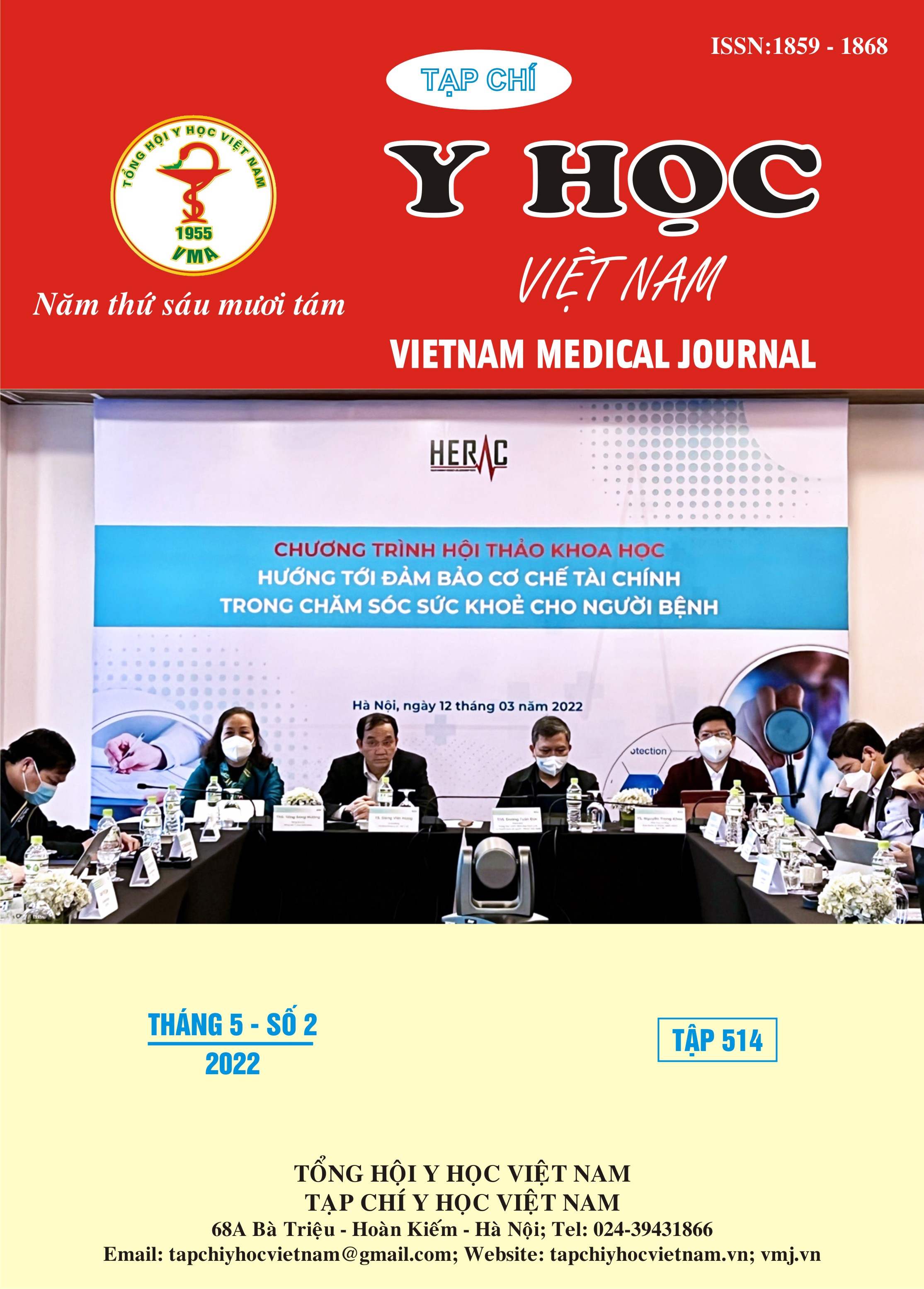CLINICAL CHARACTERISTICS, RISK FACTORS OF PATIENTS WITH NON-VALVULAR ATRIAL FIBRILLATION TREATED AT THAI BINH MEDICAL UNIVERSITY HOSPITAL
Main Article Content
Abstract
Objectives: To describe clinical characteristics and cardiovascular risk factors in patients with nonvalvular atrial fibrillation (AF) treated at Thai Binh Medical University Hospital. Methods: A descriptive, cross-sectional, prospective study in 51 nonvalvular AF patients. Results: 55.0% AF patients were over 65-year-old, female/male ratio = 2/1. Chronic AF accounted for 90% of cases. The most common clinical symptoms were nervousness in 27 patients (accounted for 52.9%); dyspnea in 20 patients (accounting for 39.2%). Patients with atrial fibrillation ERHA 1 accounts for the most rate, 54.9%. Cardiovascular risk factors include 88% of patients with hyperlipidemia, 55.0% of patients aged ≥ 65 years; the rate of hypertension was 56.9%; overweight accounted for 47.0%; diabetes accounted for 33.3%; The lowest CVD risk factors were heart failure and smoking (17.6 and 19.6%). The CHA2DS2 – VASc score of the highest study patient was 6, average score was 2.92 ± 1.77. The risk of bleeding according to the HAS - BLED scale > 2 accounted for 7.8%. The results of the electrocardiogram showed that the patient's ventricular response averaged 92.2 ± 18.8 beats/min. Echocardiography showed that 25.5% of patients had increased Dd; 11.8% of patients had reduced EF, dilated left atrium in 62.8% of cases, 7 patients had left atrial thrombosis, accounting for 13.7%. Conclusion: Attention should be paid to timely control of risk factors and prevention of thrombosis in patients with atrial fibrillation.
Article Details
References
2. Chien KL, S.T., Hsu HC, et al (2010), Atrial fibrillation prevalence, incidence and risk of stroke and all-cause death among Chinese. Int J. Cardiol, 2010. 139 (2): p. 173-180.
3. Iguchi Y, K.K., Aoki J. et al (2008), Prevalence of atrial fibrillation in community-dwelling Japanese aged 40 years or older in Japan: analysis of 41,436 non-employee residents in Kurashiki-city. , Circ J. 72(6): p. 909-913.
4. Iwasaki, Y.k., et al (2011), Atrial Fibrillation Pathophysiology. Circulation, 124: p. 2264-2274.
5. Grond, M., et al (2013) Improved Detection of Silent Atrial Fibrillation Using 72-Hour Holter ECG in Patients With Ischemic Stroke. A Prospective Multicenter Cohort Study, 2013. 44 (12): p. 3357-3364.
6. Menke, J. et al (2012), Thromboembolism in Atrial Fibrillation. American Journal of Cardiology, 105 (4): p. 502-510.
7. Olesen, J. B., Torp-Pedersen, C., Hansen, M. L. et al (2012), The value of the CHA2DS2-VASc score for refining stroke risk stratification in patients with atrial fibrillation with a CHADS2 score 0–1: a nationwide cohort study. Thrombosis and haemostasis, 107(06), 1172-1179.
8. Piepoli, M.F. et al (2016) European Guidelines on cardiovascular disease prevention in clinical practice. The Sixth Joint Task Force of the European Society of Cardiology and Other Societies on Cardiovascular Disease Prevention in Clinical Practice (constituted by representatives of 10 societies and by invited experts), Developed with the special contribution of the European Association for Cardiovascular Prevention & Rehabilitation (EACPR), 2016. 37(29): p. 2315-2381.


